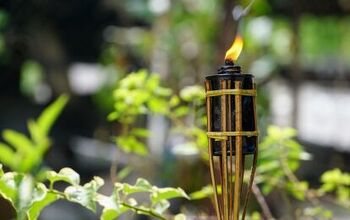Indoor Plants That Help Keep Bugs Away

Bugs and plants often go hand and hand. Many plants rely on insects for pollination and survival, and insects need plants for food, nutrients, and even shelter. This is all great when plants and insects are outdoors, but you don’t want insects thriving on plants in your home. Instead, you probably want plants that help keep bugs out of your home altogether.
Some popular houseplants that help keep bugs away include flowering plants, herbs, and carnivorous plants. Some herbs you can grow indoors to keep bugs away include basil, rosemary, sage, lemongrass, and citronella. Common flowers you can grow in pots to repel bugs indoors include geraniums, chrysanthemums, and marigolds. Carnivorous plants like Venus fly traps and trumpet pitcher plants eat and digest insects instead of repelling them.
There are a lot of factors you must consider when choosing the right houseplants for your home. You want the plant to look great, and you also want it to thrive in the space you choose for it. You should also think about the benefits of having particular plants in the home. Below is a list of plants you can grow indoors that all have the added benefit of helping keep bugs away.
13 Houseplants That Can Help Keep Insects Away
1. Lavender
Lavender is a great plant to grow indoors near a sunny window. These plants don’t require lots of water and enjoy a bit of shade. Furthermore, lavender is a soothing herb that produces beautiful purple flowers, making it a practical and ornamental indoor plant.
Lavender and its fragrant oil are also known to help repel several types of insects. Lavender might smell inviting and soothing to humans, but insects including fleas, mosquitos, flies, and moths all hate the smell of lavender, and tend to fly far away from the plant.
2. Marigold
If you are looking for a colorful flower to put inside your home, you may want to consider marigolds. Not only do marigolds help repel moles outdoors, but they can also keep insects at bay when planted inside.
Marigolds release a natural insect repellent called limonene, which repels black flies and white flies. The scent marigolds emit can also keep wasps and mosquitos away.
3. Mint
Planting mint in your home is not only great for making fresh tea and delicious mojitos, but this plant can also repel several types of insects. Mint is great to grow on window sills, as it will climb to find the light it needs. It will also give off a scent that will make your home unpleasant for insects.
Mint repels several common insects, including flies, mosquitos, and even ants. This makes it a great plant to have in a kitchen that is prone to these types of insects.
4. Citronella
Citronella is an herb that is known for its ability to repel mosquitos. Most natural mosquito repellents use citronella oil, and it can be quite effective at tricking mosquitoes. The oil masks a person’s scent and therefore makes it harder for these bugs to find their prey.
Citronella is a pretty, easy-to-grow, green leafy plant that looks great in any room with sun. In addition to repelling mosquitoes, it can also deter several types of flies.
5. Rosemary
Rosemary is a hearty herb that is fantastic to grow indoors, especially when it's too cold to grow outside. Rosemary not only adds lots of flavor to food, but it also adds a strong evergreen fragrance to your home.
This fragrance smells like a Christmas tree, and it also keeps several biting insects away, including midges, “no-see-ums,” and other bugs that can fit through window screens. If you have an issue with these tiny biting bugs, consider using rosemary throughout your home.
6. Venus Fly Trap
Some plants don’t simply repel insects, they kill and consume them. The most famous insect-eating plant is the Venus fly trap. While just one of more than 700 types of carnivorous plants, this type is the most famous thanks to its signature mouth-like trap.
This plant uses colors and sweet aromas to lure bugs into its trap before closing and then slowly consuming them. These plants are natural bug traps and will digest nearly any insect that is unfortunate enough to land on it.
7. Basil
Basil is another great herb you can grow indoors that can also help keep pesky bugs away. There are many types of basil you can grow, but it’s usually wise to choose a basil that can tolerate shade and less direct sunlight when growing it indoors.
Basil will help repel several flying insects you don’t want in your home, including mosquitoes. When planted outdoors, this plant will repel bad insects and attract good ones, like butterflies and bees.
8. Chrysanthemums
Another great flowering plant that is worth buying to keep bugs away, these plants, often called mums, produce pyrethrum, which can deter all sorts of bugs. They are particularly great in city apartments, as they deter roaches, silverfish, ants and other insects commonly found in apartment buildings.
9. Catnip
If you love cats and hate insects, then it’s time to plant some catnip in your home. Cats love catnip and are sure to be in a better mood when it’s around. Furthermore, this plant repels insects, flies, and even deer ticks, which are known to carry Lyme disease.
10. Sage
Sage is a quintessential fall herb and can be used throughout the year in various rustic recipes. It also happens to be another great herb that can keep biting insects away from your skin. The reason sage is a great herb for keeping biting insects away is because it produces cineole and camphor. These two natural compounds mess with insects and their preceptors, making it difficult to identify humans to bite.
11. Geranium
Geraniums are a resilient and long-lasting flowering plant that you can easily grow indoors in the right conditions. In addition to these flowers adding a lovely natural pop of color to any space, they are also highly effective at keeping several types of bugs away.
While all geraniums give off scents and oils through their leaves, some geraniums are more effective than others at keeping insects out of your home. Scented geranium tends to have stronger smells and release more oils. In turn, they are better at repelling insects.
12. Trumpet Pitchers
Another common carnivorous plant that you can display in your home and use as a natural bug trap is a trumpet pitcher. These plants aren’t as popular as the Venus fly trap, but you can argue that they are more attractive to look at.
These plants trap bugs by attracting them into the “pitcher” portion of their flower and then closing and trapping the insect. The “pitcher” is usually colorful, and looks like a pretty flower. This is a contrast to the Venus fly trap, which looks like a natural bug trap.
13. Lemongrass
Lastly, no list of insect-repellent plants is complete without including lemongrass. This plant has a citrus and sweet aroma that is fantastic at repelling mosquitos and other biting insects. While this herb grows best in subtropical climates and outdoors, it can be grown indoors or on winterized porches in the right conditions. Just make sure the plants have plenty of soil and nutrients and put this herb in a sunny and warm spot.
Wrapping Up Indoor Plants That Will Keep Bugs Away
If you are in the market for some new indoor plants, consider choosing some that will not only look great in your home, but will help keep insects away. Some herbs, including basil, rosemary, sage, citronella, lemongrass, and lavender are all fantastic herbs to grow indoors and they repel bugs. If you are looking for a flowering plant that keeps insects away, opt for geraniums, chrysanthemums, or marigolds. If you want to spice things up with a carnivorous plant, opt for the iconic Venus fly trap, or the more subtle trumpet pitcher plant.
Related Guides:

Tom Gaffey is an expert writer who currently resides in Washington D.C. Tom has a passion for real estate and home improvement writing, as well as travel and lifestyle writing. He lived the last twelve years in Hawaii where he worked closely with luxury resorts and event planners, mastering his knowledge of aesthetics and luxury products. This is where he found his passion for home improvement and a keen interest in DIY projects. Currently, Tom resides in Washington D.C, and also working on his debut fiction novel.
More by Tom Gaffey














![The 10 Best Table Saws - [2022 Reviews & Buyer's Guide]](https://cdn-fastly.upgradedhome.com/media/2023/07/31/9070645/the-10-best-table-saws-2022-reviews-buyer-s-guide.jpg?size=350x220)









![12 Washing Machine Brands to Avoid [with Recall Data]](https://cdn-fastly.upgradedhome.com/media/2023/07/31/9075781/12-washing-machine-brands-to-avoid-with-recall-data.jpg?size=350x220)

![10 Most Dangerous Neighborhoods in Baltimore [Updated]](https://cdn-fastly.upgradedhome.com/media/2023/07/31/9075655/10-most-dangerous-neighborhoods-in-baltimore-updated.jpg?size=350x220)
